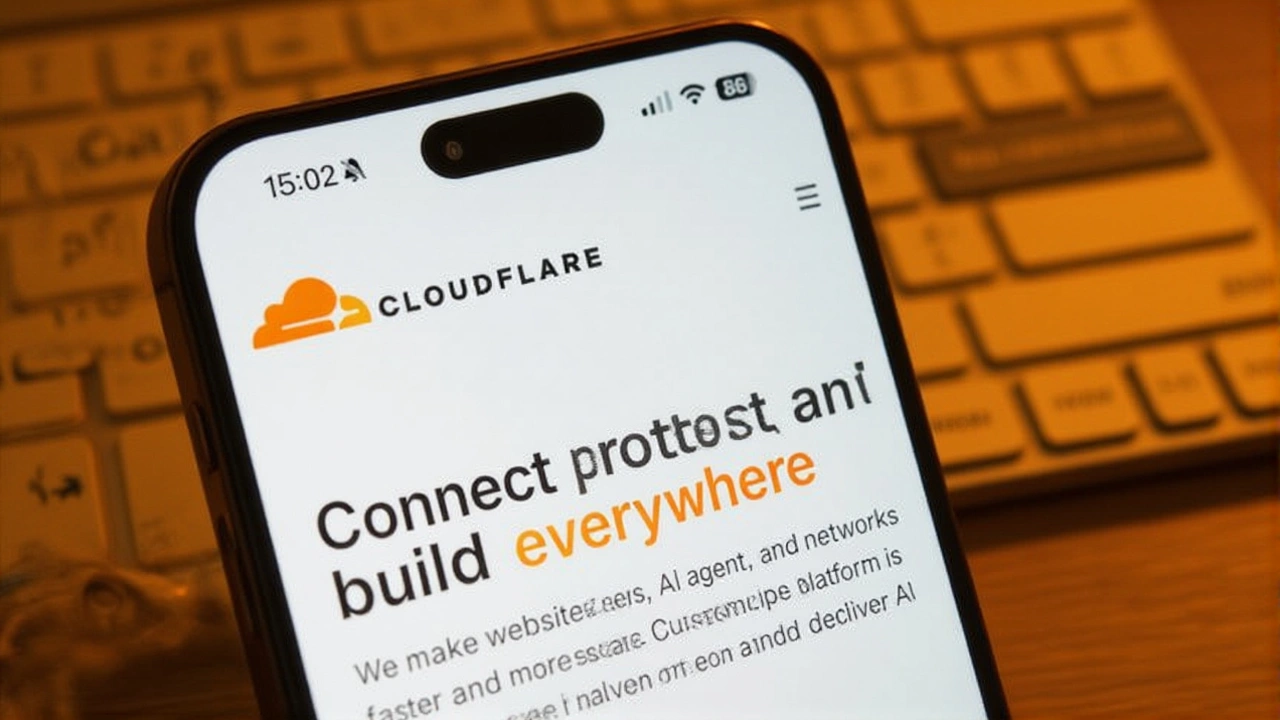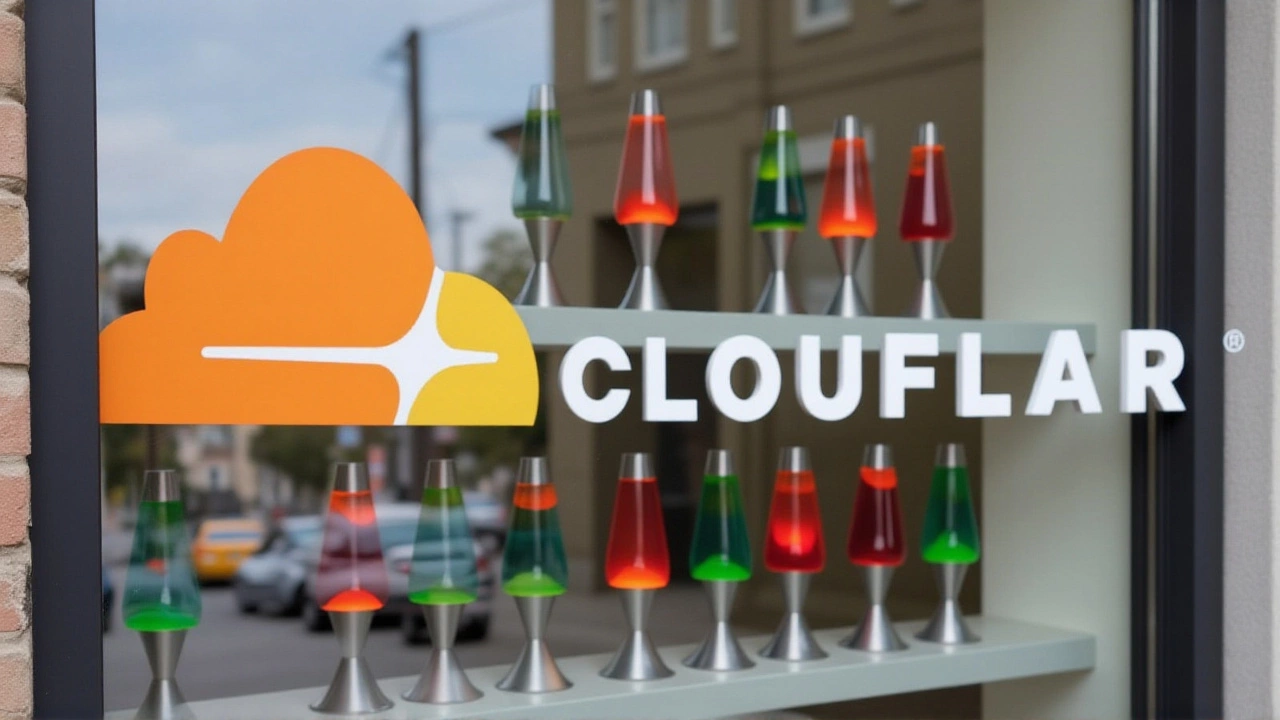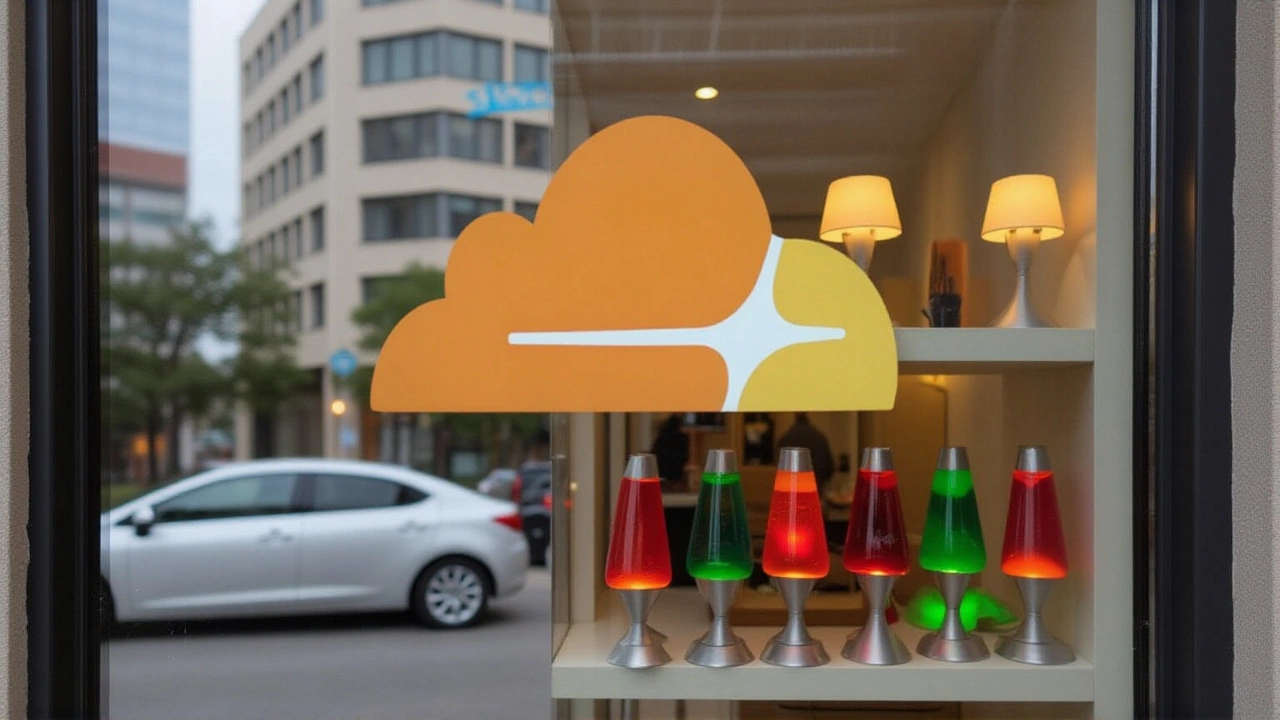Cloudflare Outage Takes Down ChatGPT, X, Spotify in Global Web Crash

On November 18, 2025, the internet blinked. Not because of a cyberattack or solar flare—but because a single misconfigured file crashed the backbone of the modern web. Cloudflare, the San Francisco-based content delivery network and cybersecurity giant, suffered a catastrophic global outage that knocked offline OpenAI’s ChatGPT, X (formerly Twitter), Spotify, Canva, and Claude—all within minutes. Millions of users saw nothing but 500 Internal Server Errors. For a world that runs on cloud services, it was a wake-up call wrapped in a glitch.
How a Tiny File Broke the Internet
The root cause? Not a hacker. Not a power surge. Not even a software update gone wrong. According to analysis from tech commentator channel Varun Talks, published on November 19, 2025, a latent bug in Cloudflare’s bot-management system was triggered by a configuration file that grew too large—beyond the system’s capacity to handle. This subsystem, designed to separate humans from bots, suddenly became its own worst enemy. The file ballooned, overloaded memory buffers, and triggered cascading failures across Cloudflare’s global edge network. Think of it like a single faulty valve in a water main that bursts every pipe downstream. Suddenly, services that relied on Cloudflare’s DNS, DDoS protection, and traffic routing were cut off from the internet.
What made it worse? Cloudflare isn’t just another provider. It sits between users and over 30 million websites and apps. When it stumbles, the entire ecosystem trembles. ChatGPT went dark just as students were cramming for exams. X vanished mid-trending topic. Spotify stopped streaming. Canva users couldn’t save their designs. Even enterprise dashboards for internal tools went offline. No one was spared.
The Fix Was Simple—But Terrifying
Cloudflare’s response was swift, but startlingly low-tech: they rolled back to a previous configuration and patched the bug. No fancy AI-driven recovery. No emergency server swap. Just reverting to a known-good state—like hitting Ctrl+Z on a corrupted document. The fix worked. Services began returning online within hours, though exact restoration times remain unconfirmed. The fact that such a massive disruption could be solved by undoing a single file change is both a relief and a nightmare. It means the system is fragile. It means one person, one typo, one automated script gone rogue, can bring down the internet’s plumbing.
"Cloudflare is one of the biggest players in web infrastructure," the Varun Talks video stated. "This outage shows how fragile the backbone of the Internet can be. If you rely on web-based services, this failure could have (or did) affect you." And that’s the chilling part. You didn’t need to be a tech executive to feel this. You just needed to open a browser.

Why This Isn’t Just a Cloudflare Problem
This wasn’t an isolated incident. It’s the latest in a growing pattern. In 2021, Fastly’s outage took down Reddit, Amazon, and the New York Times. In 2023, a misconfigured BGP route crippled Meta’s services for hours. And now, Cloudflare. Each time, the cause is different—but the pattern is identical: a single point of failure in critical infrastructure. The web has become dangerously centralized. A handful of companies—Cloudflare, Amazon Web Services, Google Cloud, Microsoft Azure—now hold the keys to nearly every digital service we use.
"Can we trust CDN infra?" asked the video. That’s not a rhetorical question anymore. It’s a business risk. A legal liability. A public safety concern. Hospitals, banks, emergency services—all increasingly reliant on cloud providers. When Cloudflare fell, so did tools used by remote teams, telehealth platforms, and even online voting systems in some regions. The ripple effects are invisible until they’re catastrophic.

What’s Next? A New Era of Skepticism
Cloudflare says it’s implementing new safeguards to prevent the file size from ever exceeding thresholds again. But that’s a bandage. The real question is: Why was the system built to fail this way in the first place? Engineers have known for years that configuration drift is a silent killer in distributed systems. Yet most companies prioritize speed over resilience. Scalability over stability. Profit over preparedness.
Expect more companies to demand multi-CDN strategies. More startups to build redundancy into their architectures. More regulators to ask whether critical infrastructure should be held to the same standards as power grids or water systems. The European Union is already considering rules that would require "digital lifelines" to have fail-safes. The U.S. may follow.
For now, users are back online. Services are humming. But the trust is cracked. And that’s harder to fix than any configuration file.
Frequently Asked Questions
How many users were affected by the Cloudflare outage?
Exact numbers aren’t public, but given that Cloudflare serves over 30 million internet properties—including major platforms like ChatGPT, X, and Spotify—the outage likely impacted hundreds of millions of users globally. Many reported disruptions during peak usage hours, suggesting widespread consumer and enterprise impact.
Why did a misconfigured file cause such a massive crash?
Cloudflare’s bot-management system dynamically loads configuration files into memory. When the file grew beyond its memory limits, it triggered buffer overflows across edge servers worldwide. Because the system is designed for speed, not redundancy, the failure propagated instantly instead of being contained. It was a classic case of optimization overriding safety.
Could this happen again?
Absolutely. Until companies redesign their infrastructure to assume failure is inevitable—not rare—similar outages will recur. Cloudflare’s patch fixes this specific bug, but doesn’t address systemic over-reliance on single-point configurations. Experts warn that the next outage may come from a different subsystem, but the root cause will be the same: complexity without resilience.
What does this mean for small businesses using Cloudflare?
Small businesses are just as vulnerable—if not more so. Unlike enterprises with backup providers, many small sites rely entirely on Cloudflare for free or low-cost services. One outage can mean lost sales, damaged reputation, and hours of recovery. This event should push even solo entrepreneurs to consider multi-CDN setups or at least caching strategies that reduce dependency.
Is there a regulatory response expected?
Yes. The European Commission has signaled interest in treating critical CDN providers like essential infrastructure, similar to telecoms. In the U.S., the FCC and CISA are reviewing whether to mandate minimum uptime standards for companies serving over 10 million domains. This outage may accelerate those discussions into formal policy by mid-2026.
How did Varun Talks know the details if Cloudflare didn’t release them?
Varun Talks pieced together the story using public error logs, user reports, DNS monitoring tools, and Cloudflare’s own status page history. While Cloudflare didn’t publish a full technical breakdown, the pattern of 500 errors across major services, combined with known system architecture, allowed for a highly accurate reconstruction. This highlights how much we can learn from open data—even without official disclosures.